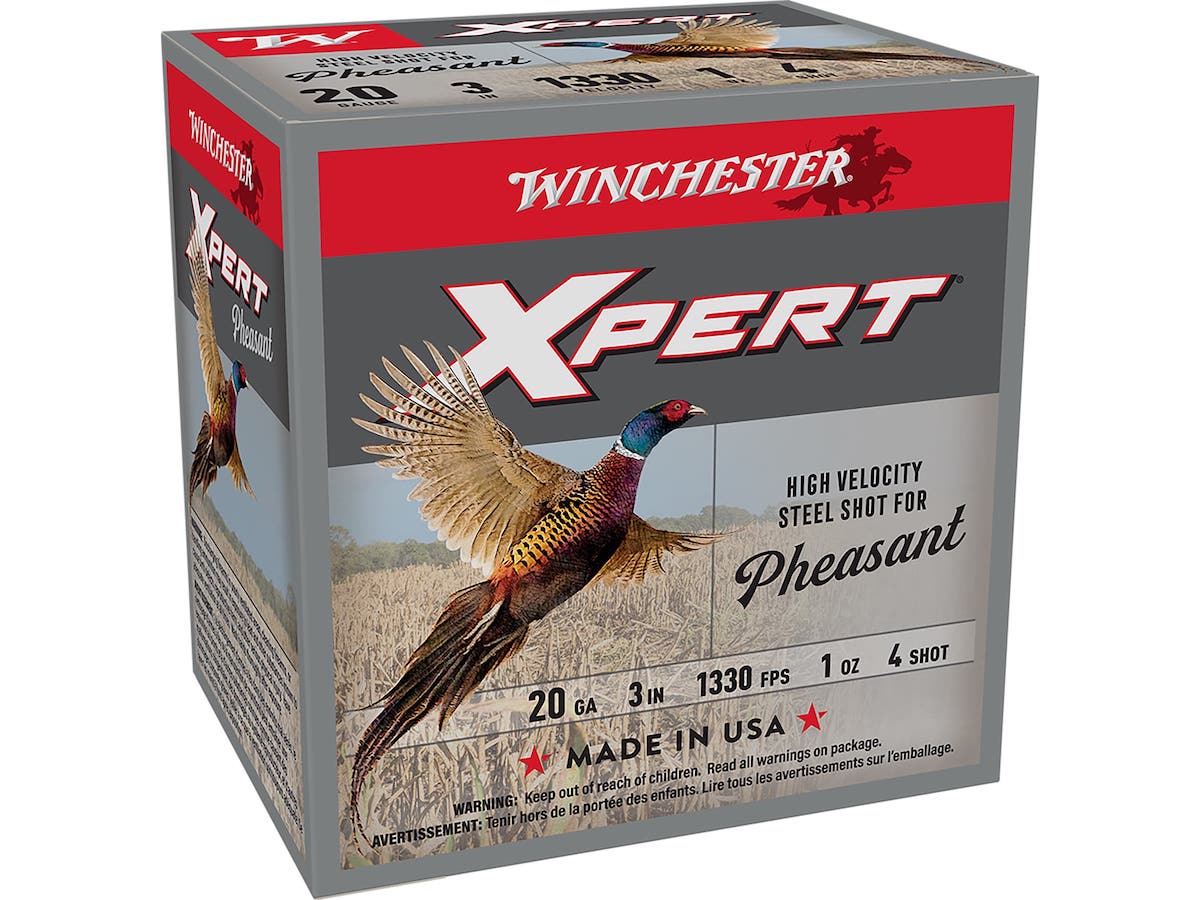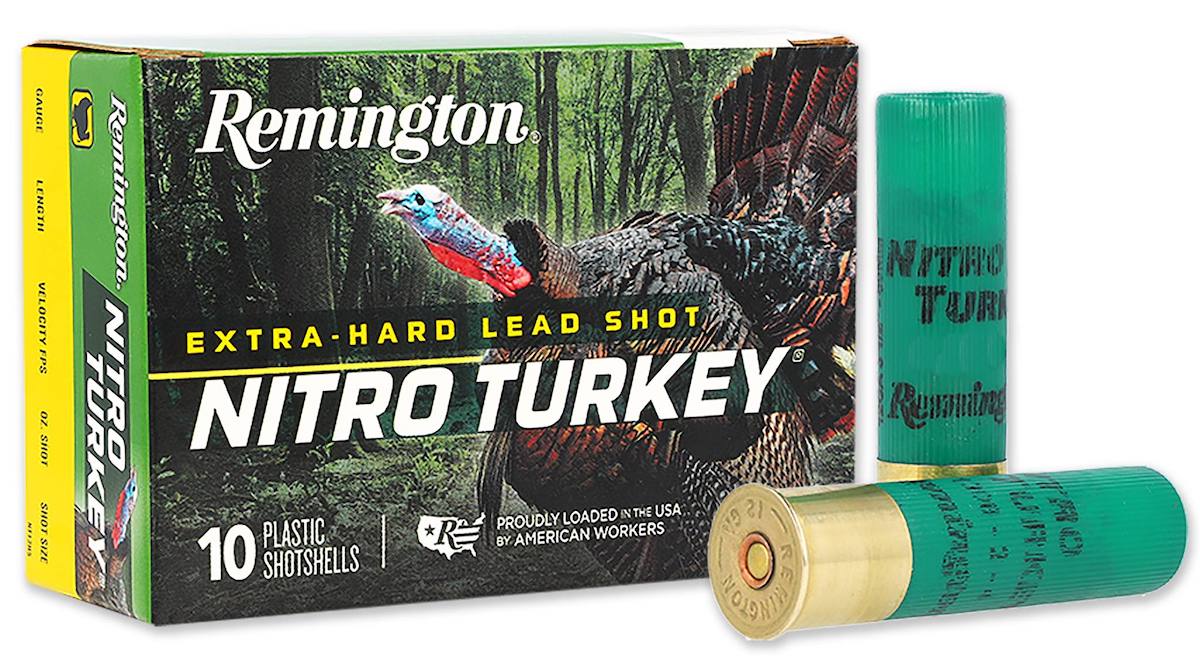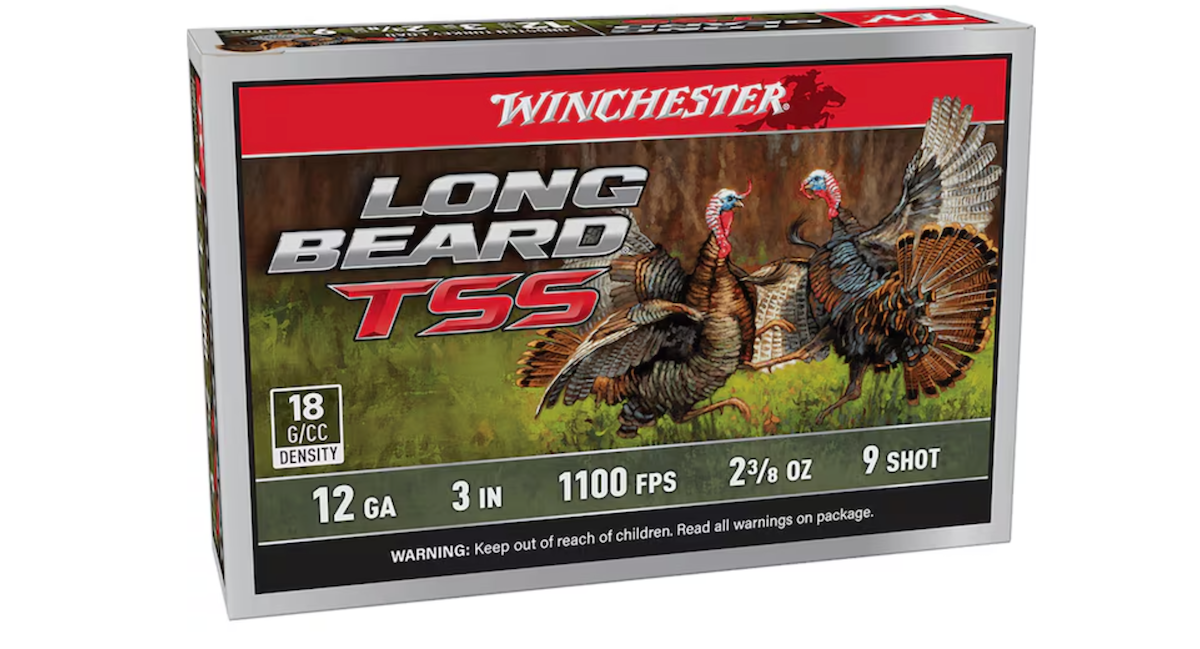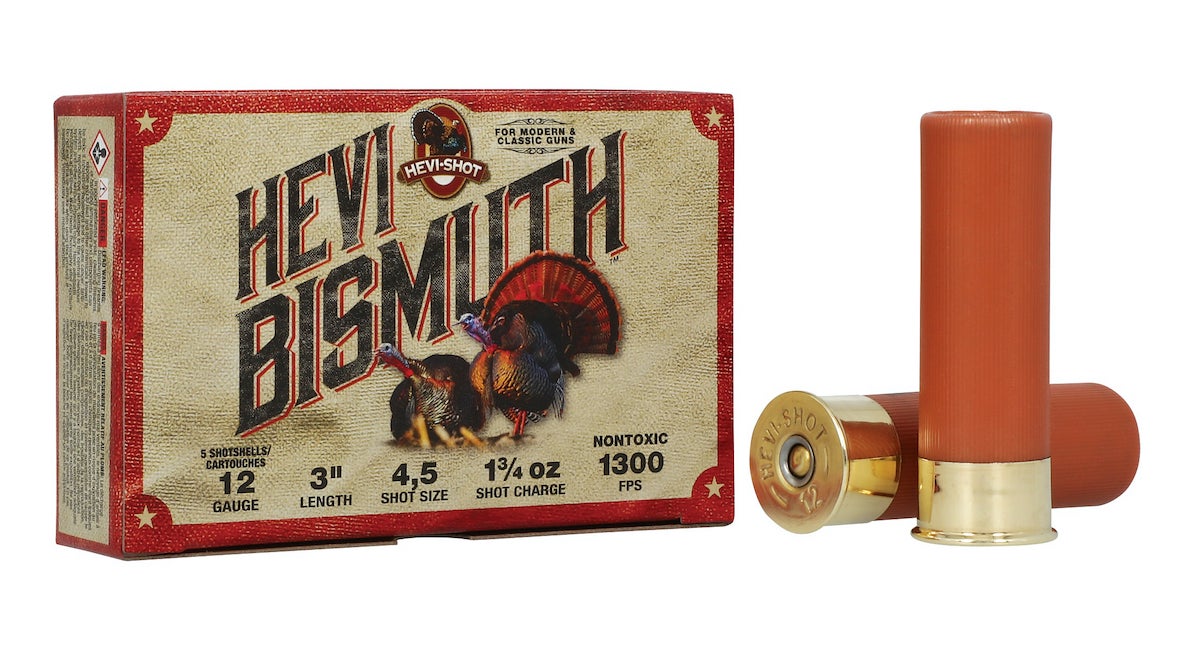Selecting the Right Turkey Shotgun Shells for Spring Hunting
Keith Lusher 03.26.25

When it comes to turkey hunting success, ammunition selection can make all the difference between filling a tag and watching a gobbler walk away unscathed. The days of relying solely on standard 2¾-inch, #6 lead field loads are long behind us. Today’s turkey hunting marketplace offers a vast array of specialized shotshells – from traditional lead and affordable steel to premium tungsten alloys and versatile duplex loads – each designed to excel in specific hunting conditions. We’ll guide you down the path of selecting the right turkey shotgun shells to be successful in your spring hunt.
Turkey Hunting Coverage on AllOutdoor
- How to Pattern a Shotgun for Turkey Hunting: A Complete Guide
- Best Choke Tubes for Turkey Hunting During the 2025 Season
- Top 5 Best Turkey Shotguns of 2025 for Long Shots on Longbeards
- AllOutdoor Review – HS Strut Double Deuce Box Call for Turkey Hunting
Whether you’re hunting dense Louisiana piney woods or scoping or a deep valley in Pennsylvania, selecting the right shotshell for your particular situation can dramatically increase your odds of success. In the following sections, I’ll break down the strengths, limitations, and ideal applications of various turkey loads based on my experiences in the field, helping you make an informed choice for your next spring gobbler hunt.
Turkey Shotgun Shells – Lead
I’ve used lead shot for most of my turkey hunting days in Louisiana, mainly because it gets the job done at a reasonable price. Typically, I go with #5 or #6 shot for that balance of penetration and pattern density that works in Louisiana’s cypress and pine woods. The density of lead delivers solid knockdown power, and with my full choke, I get reliable patterns out to about 40 yards. For my hunting style, this is usually sufficient since I prefer to call birds in close.
The main drawback is range limitation. When that big tom hangs up at 45+ yards, lead patterns start to thin out. Also, when I hunt public land near the Mississippi River, regulations require non-toxic shot, so I switch if I’d otherwise use #2 or larger lead loads.
Where lead truly stands out is affordability. At $1-2 per shell compared to $8+ for premium alternatives, I can pattern extensively without breaking the bank. For most hunters working within moderate ranges and legal areas, lead remains a practical choice that’s hard to beat for everyday hunts. A popular turkey shell is Remington’s Nitro Turkey which is considered a solid budget option if patterned correctly.
Turkey Shotgun Shells – Tungsten
For those special Mississippi hunts where pressured birds won’t come in close, I pack tungsten alloy shells. These premium loads changed my perspective after a trophy tom hung up at 53 yards last season. What impresses me about tungsten is the ability to use smaller shot sizes like #7 to #9 while still getting devastating penetration. The pattern density is remarkable – where my lead loads might put 8-10 pellets in a turkey’s vital zone at 45 yards, tungsten can deliver 15-20 pellets to the same area.
This performance comes with a steep price tag – I’m paying $8-12 per shell. That’s why I reserve these for specific situations: late-season hunts when birds are educated, open agricultural fields where longer shots are common, or when pursuing a particularly stubborn gobbler.
While not my everyday choice due to cost, I’ve come to see tungsten shells as specialized tools for specific challenges. They aren’t magic – good calling and hunting skills still matter more – but when conditions demand extended-range capability, tungsten delivers what lead cannot.
Turkey Shotgun Shells – Bismuth
I started using bismuth a few seasons back when hunting a new lease that banned lead shot. These shells offer a middle ground that’s been surprisingly effective in certain situations. Bismuth is heavier than steel but softer than tungsten, delivering decent patterns out to about 40 yards. It’s gentler on older shotguns – which matters for my old A-5 that I use occasionally. The non-toxic aspect means I don’t have to worry about switching loads between my regular spots and regulated areas.
The main limitations I’ve found are reduced range compared to tungsten and higher cost than lead. Bismuth patterns start opening up beyond 40 yards, making longer shots risky. At around $3 per shell, they’re more expensive than lead but won’t empty your wallet like tungsten.
For hunters who frequently cross between lead-allowed and lead-restricted areas, bismuth offers convenient versatility without requiring multiple shotguns or chokes.
Turkey Shotgun Shells – Steel
I’ve used steel shells when necessary, particularly when hunting public lands near wetlands in Mississippi, but they’re not my preference for turkeys. Steel’s primary advantage is being non-toxic and relatively affordable at $1.50 – $2 per shell. I typically use larger shot sizes (#2 or #3) to compensate for steel’s lighter weight, which means fewer pellets per load compared to my usual #5 or #6 lead.
The biggest limitation is effective range. I keep steel shots inside 30 yards when hunting turkeys – beyond that, the patterns thin out too much for reliable kills. I also switch to a modified choke rather than full when shooting steel to prevent barrel damage. Steel works in a pinch when regulations demand it, but I consider it the least effective option specifically for turkey hunting among the available alternatives.
If you’re stuck with steel, pattern it first, keep shots short, and use #4 or #2—#6 steel won’t cut it for penetration. Still, for serious turkey hunting, bismuth or tungsten shells outclass steel every time. I’ve used Winchester Xpert Steel Shot in 12-gauge, 3-inch loads with #4 or #2 shot when on a budget or in areas banning lead.

Turkey Shotgun Shells – Duplex or Mixed Shot
On a recommendation from a hunting buddy, I tried duplex loads combining #5 and #7 shot a few seasons ago. These have become my go-to shells for our varied hunting conditions in Louisiana. What I appreciate about duplex loads is their adaptability. Whether I’m hunting open agricultural fields or thick pine stands back home, these shells perform reliably. The larger pellets provide good penetration while smaller ones create denser patterns – a practical compromise for unpredictable hunting scenarios.
They do require thorough patterning, as the mix of shot sizes can create more variability than single-size loads. At $4 – $5 per shell, they’re moderately priced – more than basic lead but significantly less than premium tungsten. For hunters who face varied hunting conditions and want a versatile option without switching loads, duplex shells offer a practical middle ground worth considering.
When choosing the right turkey load, consider your typical hunting environment, shot distances, and budget. There’s no perfect shell for every situation, but understanding the strengths and limitations of each option will help you make the right choice when that longbeard steps into range.

Keith Lusher is an award-winning outdoor journalist who resides in Covington, Louisiana. He owns and operates NorthshoreFishingReport.com and writes a weekly outdoor column for the Slidell Independent Newspaper. He also writes for the St.Tammany Parish Tourism Commission's VisitTheNorthshore.com. He is the former host of The Northshore Fishing Report Radio Show and is on the board of the Louisiana Outdoor Writers Association. Keith contributes to numerous publications both online and in print and prides himself on promoting South Louisiana’s unique fishery. To contact Keith email: keithlusherjr@gmail.com



